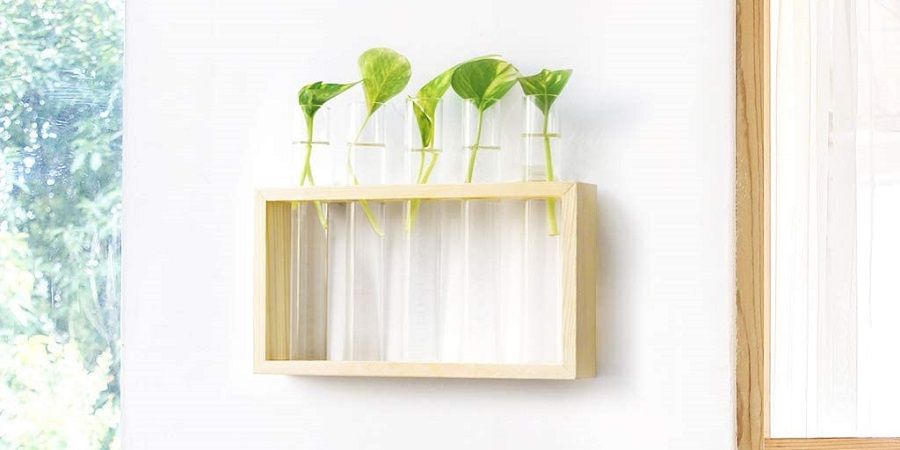Plant propagation is one of the best things about growing gardens, indoor and outdoor since it helps save a lot of time and money spent on cultivating a healthy plant. Not only is it practical, but it's also a great way of adding life into your home when you use the right station. Keep reading to discover five of the best propagation stations online to help you grow your garden.
Backyard Boss Top 5 Plant Propagation Stations in 2021
|
PRODUCT |
FEATURES |
||
|---|---|---|---|
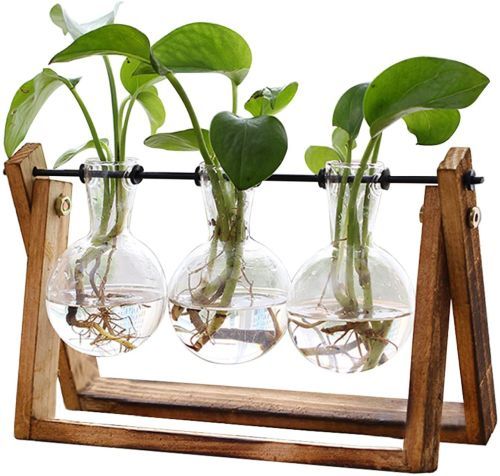
|
|
||
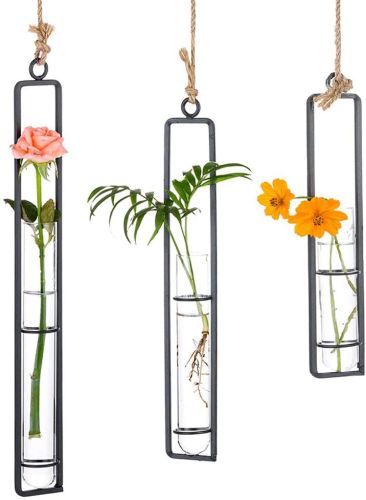
|
|
||
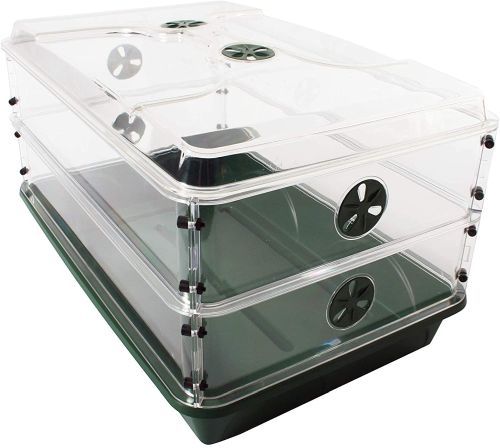
|
|
||
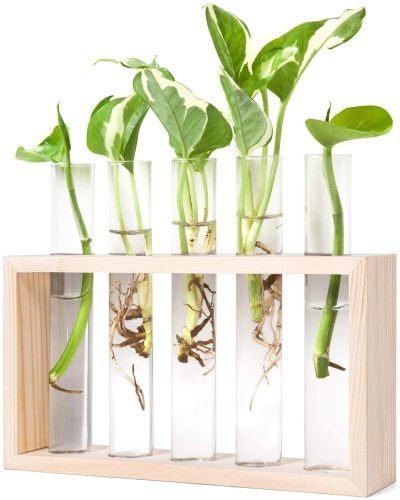
|
|
||
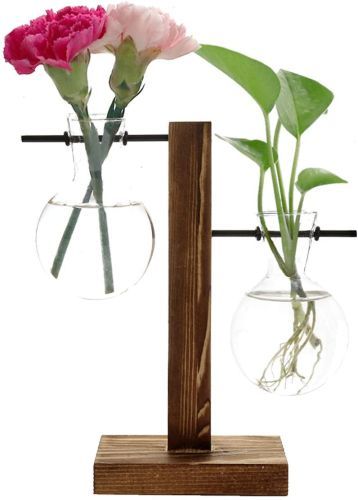
|
|
Why You Can Trust Us
Many would be surprised to know that propagating plants is one of the most relaxing and beautiful experiences of being a plant parent. I can say for certain that witnessing roots grow from a single leaf stem is an experience that never loses its magic. Propagating plants is a basic practice in growing a healthy and full garden and it's the gardener's secret to avoiding extra cost. Using both the knowledge I've gained from decades of personal experience as a plant parent and what I learned from hours upon hours worth of extensive research, I came up with this list of the best propagation stations for home gardeners!
Best for Serious Beginners
This station is a multifunctional piece that serves as both decor and a home for your plants. I can see this working very well from a practical view since the bulbous shape of the glass planters allow a lot of room for cuttings to grow the roots they need. It's a mostly foolproof propagation setup that looks great on a mantle.
- Easy assembly
- Chic design for decor
- Compact size
- Wood parts are slightly uneven
- Only accommodates small propagates
|
|
Why We Like It: This setup comes in a chic modern design, measuring a little less than a foot long, and comes with three durable, heat-resistant glass bulbs to hang from a metal rod. The glass material is heat resistant and won't break easily, making it ideal for transport and cleaning. This set comes with complete accessories for a five-minute assembly, granted that the instructions posted online are followed well.
Who Should Buy It: This easy-to-assemble station is great for beginners who want to try propagating plants, due to the compact size and the option to propagate three stems at a time. It's great for testing out if this process is for you and, if not, you can use it as ordinary vases and decor.
Best for Hanging Propagation
This minimalist design wonderfully displays propagates by hanging from the ceiling, reminiscent of light fixtures. It's sure to make a statement in any room and is a clever way to make use of overhead space that isn't given much attention or use.
- Unique hanging design
- Versatile minimalist style
- Large glass tubes for plants
- No damage to wall and ceiling attachments
- Only uses jute twine to hang from the ceiling
- Glass tubes are not break-resistant
|
|
Why We Like It: This comes in a pendulum-style hydroponic propagation station. Made of iron framing and glass test tubes that come in three different sizes (small, medium, and large), one set can hold 3 long cuttings. Installation is extremely simple, as it only needs to be secured with the included jute twine to hang from a hook, beam, or any similar surface. This makes it easy to rearrange your space and move it to a better placement without fear of ruining your walls!
Who Should Buy It: This propagation station would be great for stylish plant hobbyists and those who prefer versatile minimalistic designs. These elegant fixtures help elevate a home and, although bought in sets of three, would still look fitting when hung in bigger batches.
Best for Serious Gardeners
This propagation station is different from others on this list in how it prioritizes function over form. With this heavy-duty design, home gardeners can propagate all kinds of plants through various propagation methods.
- Heavy-duty germination and propagation station
- Works for a variety of propagation methods
- Has air vents and extendable features
- Shatterproof and UV-protected materials
- Not for casual gardeners
- Unattractive design for indoors
- Takes up considerable space
|
|
Why We Like It: This station takes up to two feet of space with an adjustable dome height to accommodate plant growth. This dome structure can also be used indoors and outdoors, with a shatterproof and UV-protected lid. This lid also helps manage humidity levels and keeps the plants safe from outside contaminants.
Who Should Buy It: This station makes the most sense for serious gardeners with a deeper background in plantlife. The way this is designed allows for more variety in the plant life being grown and is an important upgrade for beginner propagation systems.
Best for Propagation Enthusiasts
This station is almost guaranteed to fit into your home and help nurture your love for growing plants. With such a classic and clean design, it looks great in multiples and maximizes your potential to propagate plants in optimal conditions, without wasting space or resources.
- Can hold five propagates
- Easily customizable wood finish
- Included hook leaves no mark
- Comes with an extra glass tube, two hooks, and a cleaning apparatus
- Only accommodates small propagates
|
|
Why We Like It: This is a propagation planter that can hold up to five cuttings at a time. It comes in a wooden base, measuring around half a foot long, that can hold five test tube vials for hydroponic plant propagation. It uses untreated wood that allows for basic customizations, like adding paint or a stain, to match your space better. In case of breakage, this set comes with an additional glass tube. Other accessories include two hanging hooks if you choose to mount them on the wall, and a special cleaning brush for the test tubes.
Who Should Buy It: This station is particularly great for enthusiasts who grow plant propagates often. It helps contain the space being taken up by the plants and allows similar propagates to be grouped and placed in prime conditions.
Best for Dual Plant Propagation
This station has an interesting and space-saving design that fits snugly on a desk or bookshelf while displaying propagating plants. This brightens up any room and, I imagine, would be an amazing relief for when we're hard at work during the day.
- Base comes pre-assembled
- Desktop statement piece
- Space-saving
- Fragile glass planters
|
|
Why We Like It: This hydroponic planter is great for minimal tabletop spaces. The classy dual planter design is done in an interesting asymmetrical style that doesn't take up much room. It comes with a pre-assembled wooden base that stands at almost eight inches tall and spans four inches long. The shape of the glass and the stability of the stand help it grow a variety of plant propagates, long or short. Fortunately, cleaning this kit is also made easy thanks to the lightness of the station's materials, allowing it to be carried and cleaned without fear of being dropped and breaking.
Who Should Buy It: This station would be great for working plant parents since it would look great in office spaces, whether at home or in the company building.
What Is a Propagation Station?
A propagation station is a dedicated area that helps plant clippings grow roots before being planted in soil. This allows the easy cloning of a parent plant with the same genetic makeup, without any plant life harmed and no money, time, or effort wasted. Home propagation stations help people grow their houseplants, herbs, and vegetables at a much lower cost than if grown from seeds or bought from a store. Propagation stations are a brilliant way to fill a whole garden and come in a variety of sophisticated and quirky styles that help make even the simplest of tables look fantastic, often only needing water to make something beautiful.
Plant Station Buying Guide
Even with your options significantly narrowed down with this list, there is still much to consider when choosing the one that's best for you and your needs. This propagation station buying guide is here to help you decide:
Hydroponics vs. Soil vs. Soilless Mixture Set-Up
With some research and exposure to hobby gardeners, you'll learn that there is so much to learn about plant propagation and the different techniques to do it. Hydroponic plant propagation is one of the most common ways to do this, especially as it works best with houseplants, herbs, and some simple vegetables. With a station like this, indoor gardening won't require much space and can be all-year-round.
There is also a soilless method that uses nutrient-rich natural materials, like peat moss or organic fertilizer, that help propagate softwood cuttings. Rather than relying solely on simple water, this method uses high humidity levels and nutritious environments to grow healthy roots.
As propagating a plant will usually lead to the rooted stem being planted in soil, plant propagation can also be done through simple soil, although this works best with the more hardy kinds of trees and shrubs.
What Kind of Plants Will You Propagate?
In general, knowing which plants you're interested in growing is half the battle. There are several ways to classify plants but, for propagation, knowing them by their growth habits would be best. Herbs grow different from climbers and crawlers, while shrubs have different needs than trees. These plants are further divided into specific species, which lend insight into other needs. Houseplants are the easiest to research, with a wide array of information available online for growing, caring, and propagating these plants. You just need to find the right plants that can easily grow from cuttings.
How Many Will You Propagate at a Time?
Knowing how long it will take for certain plants to propagate before it is healthy enough to transfer will give you an estimate of how many propagation set-ups you'll need at a time. If you plan to propagate a whole room's worth of plants at all times, it's best to get a practical station that doesn't take up much room yet still maximizes the ability to grow a cutting. The shorter it takes for your plants to propagate, the less you'll need multiple vials to be filled at the same time.
Where Do You Put a Propagation Station?
Image credits: Mkono via Amazon
As any biology class would teach you, generous light is essential to the plant diet. If we have food, they have delicious light! The rule of thumb for propagation stations is to place them somewhere with access to bright indirect light. However, depending on the species, plants can have varying optimal light conditions, ranging from bright, medium, and low light.
- Bright light entails full access to the sun for the whole day or, at the very least, six hours. Sun worshippers like succulents, aloes, flowers, and even some vegetables need to be placed by a West- or South-facing window with no shade.
- Medium-light, also known as partial shade, refers to the cool, morning light. By high noon, these plants are best left in the shade. Classic indoor plants such as violets, begonias, and ferns work best with partial shade from an east-facing window or by a bright light window covered with a sheer curtain.
- Lastly, low light conditions mean that it's difficult to read a book or newspaper properly without artificial light. Rooms with north-facing windows, dark shades, or no windows are great for pothos, monsteras, and other foliage plants. That said, rotating these shade-loving plants from low to medium light areas would be ideal.
How Humid Should a Propagation Station Be?
Other than lighting, plants also need proper humidity levels to thrive. Even if a plant is placed in less than stellar light conditions, some plants will still grow big and strong if given enough humidity. For cuttings, they require high humidity levels to survive, measuring above 80%, which can be done through misting and freshwater.
Since this is a severed part of a plant, these cuttings will grow roots to survive and will need lots of moisture in the meantime. Additionally, hydroponic propagated plants need their water changed every 3 – 5 days or at least once a week. This prevents CO2 build-up in the water and provides them with a fresh and clean water source. As your plants grow, their ideal humidity levels will change, based on the growth stage and rooting system.
How We Picked
This is just a list of five options from hundreds of propagation stations found online and in stores. With so much to choose from, how can we say that these are the top of the pack?
Narrowing down the list wasn't an easy task so, to do it, we focused on choosing highly-rated propagation stations based on consumer reviews. From then, we chose stations with the most durable materials and considered their versatility in terms of usage and design. We also made the conscious decision to remove from the list any units that were extremely small and often came with broken glass.
We also chose propagation stations that didn't need much expertise on the topic but could still be used by long-time plant lovers. In the end, we were able to trim the list down to five of what we believe are the best on the market.
Final Thoughts on the Best Propagation Station
If you're still debating on which station to choose, we truly believe that the one that comes out on top in this round-up is the Mkono Wall Hanging Hydroponic Glass Planter. Not only can it house five propagates at a time, but it also looks good in multiple ways and you can place it wherever. It comes with additional accessories, to help you in the long-term, and maximizes your potential to grow plants. The simple style, together with the value for money and versatility makes it a clear winner.
Plant propagation is not a fuss-free gardening method but, you'll soon find out, it's an addicting process and hugely gratifying. We could not recommend it more!


